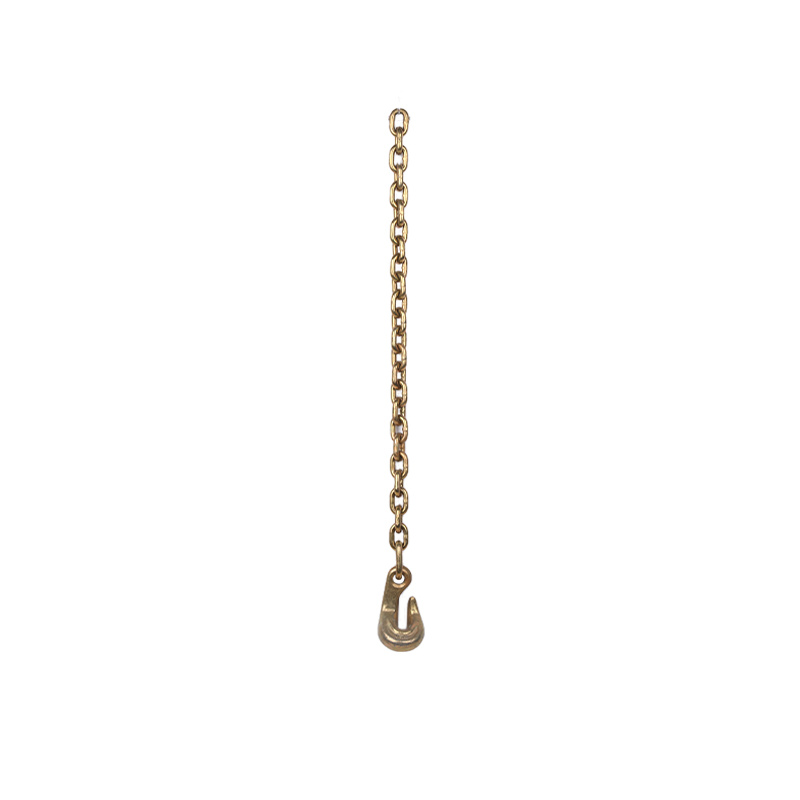Home / News / Industry News / Tie downs are a critical part of transporting heavy equipment
Tie downs are a critical part of transporting heavy equipment
Mar 24,2023
What Is a Tie Down Chain?
A tie down chain is a type of cargo securement system used to secure a load while transporting heavy equipment or vehicles. Tie downs come in a variety of different sizes, lengths and working load limits (WLL). They are usually made from forged steel, but are also available in plastic and nylon. Unlike traditional straps, chains are safer because they are less likely to tear or stretch. Chains are available in ratchet and lever styles, so they are easier to operate.
When securing a load, it is essential to ensure the safety of the chain and the cargo. The user must be well-trained to perform the job safely. In addition, the chain and binder should be tested and maintained before each use. If the chain has been damaged, it should be replaced.
Depending on the grade of the chain, the working load limit varies. Grade 70, for example, is designed to provide excellent strength and durability. However, it also provides a smaller diameter chain than other chain grades. This allows for more tie downs to be used without compromising the working load limit of the chain. Another advantage of the Grade 70 chain is that it is gold plated, making it easy to identify.
The working load limit of the chain depends on its design, shape, material, and how it is used. It should be capable of supporting the weight of the load plus the additional forces generated by the trailer hitch and angles. Any twists or corrosion can affect the working load limit of the chain.
To determine the correct chain, the operator should check the embossed identification on the links. Also, the chain should be stamped with the size, and a grade should be marked on each link. Some manufacturers mark the links with hook spots for securement.
Typically, grade 80 and grade 100 chains are made of alloy steel. These chains are suitable for overhead lifting applications, but they can also be used for logging and transportation. For heavier towing, they can be used in combination with a heavy-duty tow chain.
Tie-downs are used in trucking, construction, and agricultural applications. When choosing a chain for a specific application, be sure to choose one with a WLL rating that is higher than the minimum WLL for the application. The Federal Motor Carrier Regulations (FMCSR) require tie-downs to have a maximum combined strength of 50% of the cargo weight. There is a chart that can help the user calculate the required number of tie-downs. But, because each load is unique, it is best to consult with the manufacturer of the tie-down.
Once the correct chain and binder is chosen, the operator must make sure the tie-downs are properly secured. This can be done through daily pre-trip inspections, as well as daily post-trip inspections. During these inspections, the operator should also be aware of any hazards that may arise while securing the cargo.
Tie downs chains are a critical part of transporting heavy equipment. If the operator does not regularly inspect the chain and binder, the system could become weak, potentially leading to damage to the vehicle.

Tie Down Binder Chain Cargo Control Grab Hook
| Chain Dia (mm) | Length (feet) | S.W.L. (ton) | Breaking load (ton) | N.W. (kgs) |
| 7.1 | 9 | 1.6 | 6.5 | 3.3 |
| 12 | 1.6 | 6.5 | 4.2 | |
| 15 | 1.6 | 6.5 | 5.1 | |
| 18 | 1.6 | 6.5 | 6.3 | |
| 8 | 9 | 2 | 8 | 4.2 |
| 12 | 2 | 8 | 5.5 | |
| 15 | 2 | 8 | 6.9 | |
| 18 | 2 | 8 | 8.5 | |
| 10 | 9 | 3.2 | 13 | 6.5 |
| 12 | 3.2 | 13 | 8.5 | |
| 15 | 3.2 | 13 | 10.5 | |
| 18 | 3.2 | 13 | 13.2 | |
| 13 | 9 | 5.5 | 22 | 10.8 |
| 12 | 5.5 | 22 | 14.1 | |
| 15 | 5.5 | 22 | 17.4 | |
| 18 | 5.5 | 22 | 21.6 |


 English
English Español
Español









-1.jpg?imageView2/2/w/426/h/347/format/webp/q/75)

 Hangzhou Lijia Chain Co., Ltd.
Hangzhou Lijia Chain Co., Ltd. Tel: +86-0571-82711102
Tel: +86-0571-82711102 Fax: +86-0571-82326368
Fax: +86-0571-82326368 Mail: info@ljchain.com
Mail: info@ljchain.com Add: Lianfa village, Heshang town Xiaoshan District, Hangzhou City, Zhejiang Province, China
Add: Lianfa village, Heshang town Xiaoshan District, Hangzhou City, Zhejiang Province, China